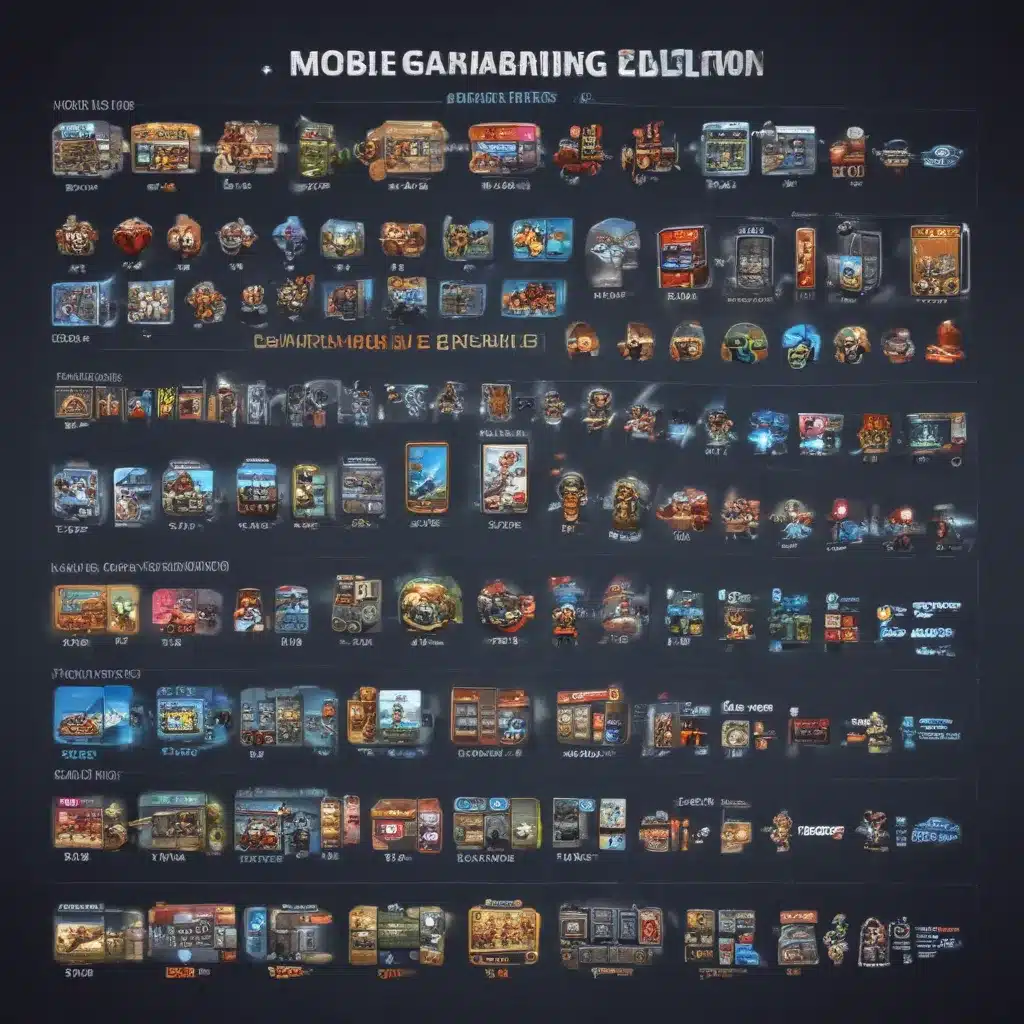The Humble Beginnings of Mobile Gaming
Remember the good old days when mobile phones were just, well, phones? You know, the ones that could only make calls and send the occasional text message? Ah, those were simpler times. But little did we know that those clunky bricks we used to lug around would one day evolve into powerful gaming platforms that would captivate billions across the globe.
It all started with a classic, the legendary Snake [1]. Released in 1997 for the Nokia 6110, this game of pixel-perfect reflexes and insatiable hunger captured the hearts (and spare time) of mobile users everywhere. Soon, other primitive but addictive games like Tetris and Tic-Tac-Toe followed, giving us a glimpse of the mobile gaming revolution to come.
As technology progressed, so did the capabilities of our phones. The introduction of the Wireless Application Protocol (WAP) in the early 2000s allowed for a new wave of multiplayer board games and even the occasional arcade port, like the iconic Space Invaders [1]. But it wasn’t until the release of the first iPhone in 2007 that mobile gaming truly took off.
The Smartphone Revolution
The iPhone’s large screen, powerful processor, and revolutionary touch interface created the perfect canvas for game developers to unleash their creativity. With the launch of the App Store in 2008, suddenly anyone could create and publish their own mobile games, forever changing the industry’s landscape.
Early success stories like Trism and Tap Tap Revenge [1] proved that mobile gaming could be a lucrative endeavor, even for solo developers. Meanwhile, established gaming giants like PopCap started porting their beloved franchises to the new platform, further fueling the mobile gaming craze.
But the real game-changer was the arrival of Angry Birds in 2009. Developed by the Finnish studio Rovio, this physics-based slingshot game became an overnight sensation, racking up over 1.7 billion downloads [1]. Its addictive gameplay, charming visuals, and freemium business model set the standard for the mobile gaming industry.
The Rise of Freemium and Social Integration
As smartphones became ubiquitous, game developers realized that the traditional pay-to-play model wasn’t the way to go. Enter the freemium model, where the core game is free to download, but players can purchase optional in-app items or power-ups to enhance their experience.
This shift was pioneered by the likes of Zynga’s FarmVille and King’s Candy Crush Saga [1], both of which integrated seamlessly with social media platforms like Facebook. Suddenly, mobile gaming became a social affair, with players eagerly asking their friends for extra lives or resources to progress through the games.
The freemium model proved to be a goldmine, with Candy Crush Saga generating a staggering $1.88 billion in revenue by the end of 2013 [1]. It also paved the way for the rise of hyper-casual games, like Crossy Road and Flappy Bird, which offered bite-sized, addictive gameplay that was easy to pick up and play.
The Mobile Gaming Ecosystem Expands
As the mobile gaming landscape matured, we started to see more and more genres and gameplay styles make their way to our fingertips. From the immersive open worlds of Genshin Impact to the competitive thrills of Fortnite, mobile games began to rival their console and PC counterparts in terms of complexity and quality.
The introduction of augmented reality (AR) and location-based gaming further blurred the lines between the virtual and physical worlds. Niantic’s Pokémon Go [1] was a prime example, sending players out into the real world to catch virtual creatures and battle for control of local landmarks. This blend of digital and physical experiences captured the public’s imagination, sparking a global phenomenon known as “Pokémon Go Mania.”
And let’s not forget the rise of mobile esports, with games like PUBG Mobile and Free Fire drawing in millions of viewers for their high-stakes tournaments [1]. The mobile gaming industry has truly come into its own, with the global market expected to reach a staggering $173.4 billion by 2026 [1].
The Future of Mobile Gaming: Endless Possibilities
As we look to the future, the mobile gaming industry is poised for even greater growth and innovation. The rollout of 5G technology promises to unlock the potential for cloud gaming, allowing players to experience console-quality titles on the go. And with advancements in AR and VR, we could soon be battling it out in virtual arenas or exploring fantastical worlds through the lens of our smartphones.
But the real game-changer might just be the increased focus on cross-platform play. Titles like Fortnite and Genshin Impact [1] have shown that seamless integration between mobile, console, and PC can create truly massive and engaged player communities. As more developers embrace this approach, the barriers between platforms will continue to crumble, paving the way for an even more immersive and connected mobile gaming future.
Of course, the mobile gaming industry won’t be without its challenges. Navigating the ever-changing landscape of app store policies, ad-based monetization, and player expectations will require constant innovation and adaptability from developers and publishers alike. But if the past two decades have taught us anything, it’s that the mobile gaming industry is resilient, creative, and always ready to surprise us.
So, as we look back on the humble beginnings of Snake and forward to the boundless potential of the future, one thing is clear: mobile gaming is here to stay. And if you ask me, the best is yet to come.
References:
[1] Knowledge from https://www.gameopedia.com/the-history-evolution-and-future-of-mobile-gaming/
[2] Knowledge from https://www.reddit.com/r/AndroidGaming/comments/2ud3oc/best_evolution_type_games/
[3] Knowledge from https://medium.com/@mobilegamerskull/a-brief-history-of-mobile-gaming-from-simple-beginnings-to-worldwide-craze-34c47e3c9b21
[4] Knowledge from https://en.wikipedia.org/wiki/History_of_mobile_games
[5] Knowledge from https://play.google.com/store/apps/details?id=com.keiwando.Evolution&hl=en_US&gl=US
[6] Knowledge from https://www.webdesigndegreecenter.org/mobile-gaming/
[7] Knowledge from https://mages.edu.sg/blog/evolution-of-mobile-gaming/
[8] Knowledge from https://www.linkedin.com/pulse/celebrating-future-avia-mobile-gaming-evolution-vickie-yanjuan-chen-yl21e?utm_source=rss&utm_campaign=articles_sitemaps













